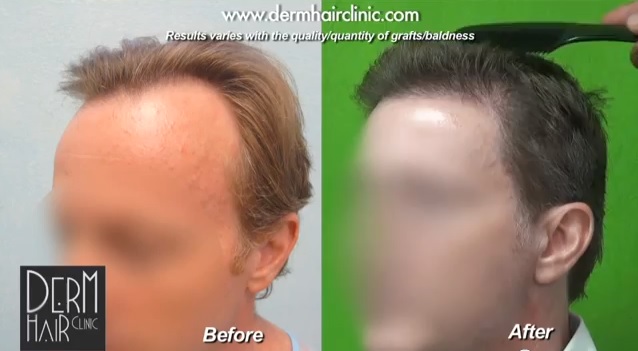Hair restoration surgeon, Dr. Umar believes that it is always important to seek the answers to questions like how and why. This helps paint a broader and more comprehensive understanding of:
(1) what it takes to achieve desired results
(2) what is necessary to avoid unwanted outcomes
Growth Yield After Hair Restoration
Anyone who is considering a hair transplantation should first understand the basic factors that contribute to quality and reliable growth. People generally assume that the production of new hair is a given since follicles are simply being transferred from one area to another. However this is not always the case.
Many of the Dr. Umar’s patients photo and video galleries experienced little to no growth following their initial surgeries at other other clinics. And due to their exhausted head donor supplies from these procedures, they sought his expertise in body hair transplantation to achieve coverage that would have otherwise been impossible.
Therefore, it would help to know ahead of time what factors are necessary to ensure that hair grows as expected.
(1) The proper selection of donor hair follicles
Some follicles are more sensitive to the effects of DHT (dehydrotestosterone) than others. Even after they are transferred, they will continue to be exposed to this compound and will probably miniaturize instead of producing long term growth.
(2) Safe and gentle handling of the extracted grafts
Mechanical injury from instruments can destroy the ability of the follicles to grow and survive. Dr. Umar has developed his uGraft technology which creates an angled cutting axis away from the follicle. It also includes a water based retrieval system to gently transport the grafts into a holding receptacle. This helps avoid dessication and the poking and tugging of forceps.
(3) Appropriate low temperature storage conditions
The follicles must be placed in a cool, moist storage environment. They should not be kept out of the body for more than six hours
Why Repositioning Hair Transplant Grafts Will Not Help
Weak or nonexistent growth implies that the follicles did not survive. Or they may be in a state of decline. Therefore, transferring non-viable grafts to a new location will not help.
A possible cause for this is poor selection or handling processes during the procedure.
Some hair transplantation doctors may feel that repositioning grafts to a new location may improve the formation of new blood vessels around these structures in order to revitalize them.
Since the grafts were inserted in a chosen target area, repositioning them would require that they are placed within the same vicinity in order to achieve the originally planned appearance. Therefore both locations would have (more or less) the same capacity to form new blood vessels. So repositioning is not likely to do much.
According to Dr. Umar’s experience in producing consistent and reliable yield for his patients, new hair will emerge around four months following the hair transplant surgery. Certainly, some patients are late bloomers. But certainly by the twelfth month, growth should be apparent. Lack of hair beyond these time frames will mean that the follicles did not survive. And repositioning will not revitalize them.
Further reading:

